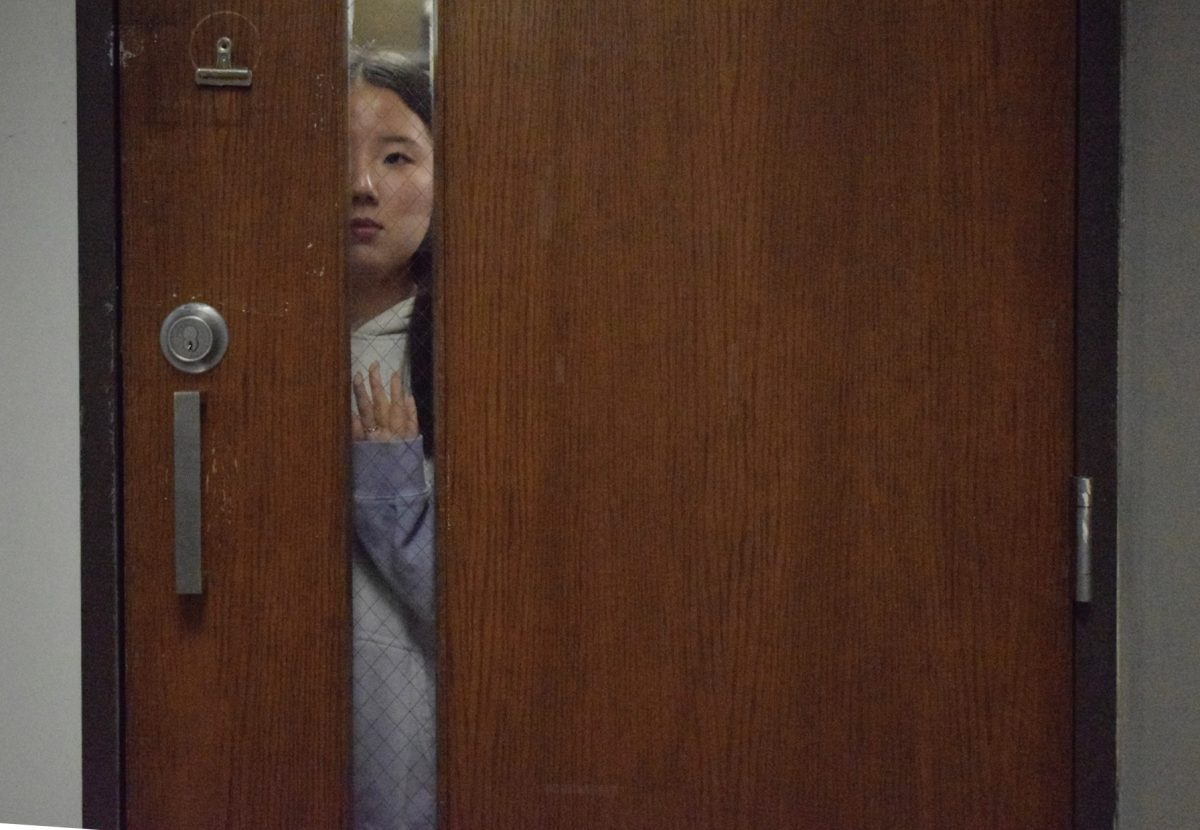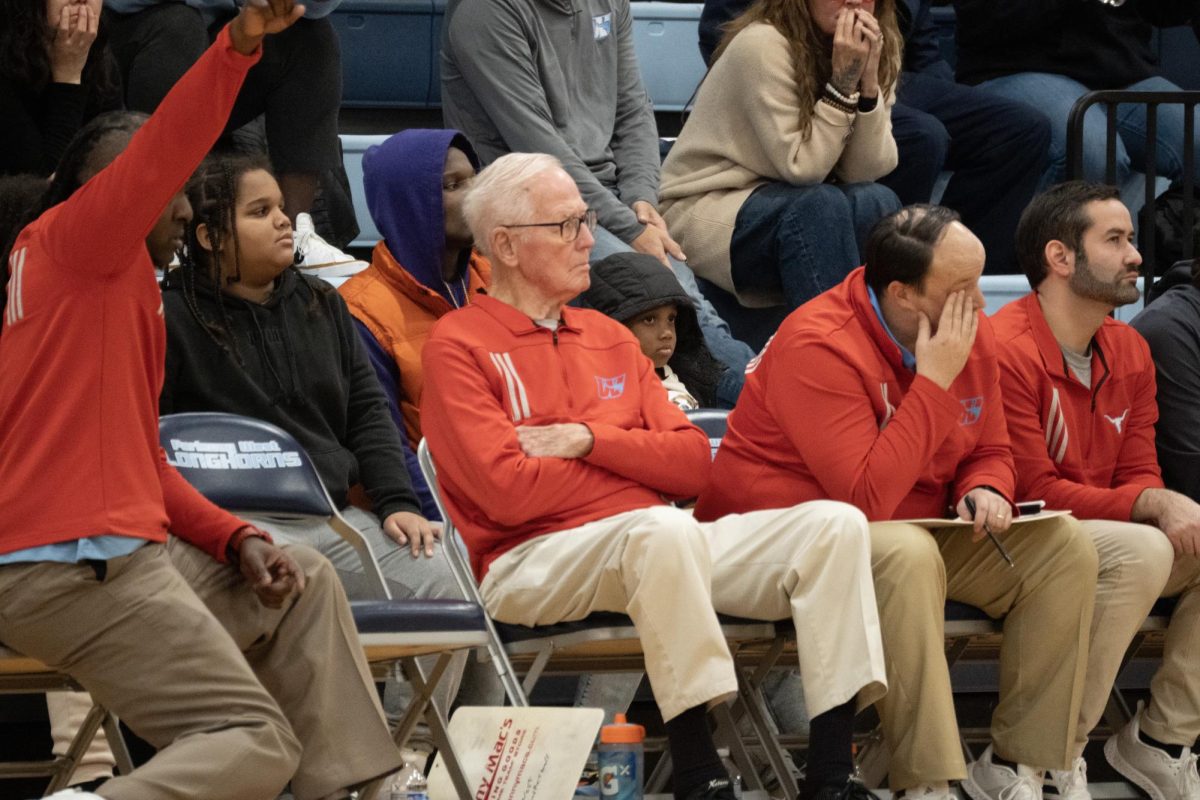With Netflix’s release of the first season of “DAHMER – The Monster: The Jeffrey Dahmer Story,” a glaring spotlight was put on both true crime and its effects on its audience. The show accumulated over 700 million hours of watch time and is the fourth most-viewed show of all time on Netflix.
The series gained popularity since it features the victims rather than the killer, unlike many other true crime anthologies or documentaries that tend to focus mainly on the attacker. In this show, the producers decided to focus on how, in a world full of racism and homophobia, the victims were failed by the police time and time again.
True crime can provide insight for viewers because it allows people to see inside the mind of a serial killer, exposes the trauma of their past and gives the audience knowledge of how killers commit their crimes. However, there’s another side: instead of identifying and allying with the victims, audience members can become obsessed with true crime, leading them to form an empathetic attitude towards the wrongdoer. So, who’s to blame here when talking about true crime and the recent obsession over it?
The exploitation of empathy
When a person watches a TV show or a movie, they spend an extensive amount of time seeing the character’s story unravel. In many true crime documentaries, the producers or writers explore the killer’s traumatic childhood, giving viewers room to empathize with the character. After being exposed to these producers’ manipulative tactics, the viewer more easily justifies the character’s horrifying actions.
Take “DAHMER – The Monster: The Jeffrey Dahmer Story,” for example. The biographical crime drama anthology series was released Sept. 21. Since then, many audience members have taken this story — a story originally meant to show how terrible of a person this racist serial killer, rapist and cannibal is — as an opportunity to romanticize Dahmer’s actions without any regards for the still-alive family of the victims.
For the victims’ families, the series is an unwelcome way of reliving what Dahmer did to their loved ones. Netflix included the experiences of the victims’ families without asking their permission. During the 11th episode, the series recreated a scene where victim Errol Lindsey’s sister, Rita Isbell, gave her impact statement. In this statement, the defendant conveys the crimes’ impact on their life.
“When I saw some of the show, it bothered me, especially when I saw myself. It felt like reliving it all over again. It brought back all the emotions I was feeling back then,” Isbell said in an interview with Jackie Strause. “I feel like Netflix should’ve asked if we mind or how we felt about making it. They didn’t ask me anything. It’s sad that they’re just making money off of this tragedy. That’s just greed.”
As someone that has lost multiple loved ones by murder, I’ll be the first to say that there is a huge gap between losing someone in a gruesome way and losing someone from old age in a peaceful way. Losing a close family member is never something I would ever want to re-live. Displaying that pain in front of the world would open a wound that I had already healed and restart the mourning process. It would be even more painful if the person who took my family away was being romanticized and worshiped the way that viewers are doing with Dahmer.
The hashtag #jeffreydahmer has nine billion views on the TikTok platform, with many videos making edits and jokes about the serial killer. Some are going as far as saying that Dahmer “wasn’t a monster” and was “really attractive physically.”
In reality, he wasn’t the ‘aesthetic’ sad boy with a tragic past like Dahmer defenders paint him. He was a monster. As a result of brutally killing 17 men, Dahmer was dubbed the ‘Milwaukee Cannibal’ or the ‘Milwaukee Monster.’ His youngest victim, Konerak Sinthasomphone, was only 14 years old when Dahmer sexually assaulted and murdered him.
Too often, shows and their viewers dehumanize victims and demonstrate blatant disrespect for victims’ families in favor of romanticizing a character. This displays the negative effects that viewers can have by creating connections with characters like Dahmer. This manipulated connection blurs the line of empathy and wrong versus right as more true crime series teach viewers to empathize with these killers.
So what is the appeal of true crime?
In short, curiosity killed the cat. Human beings are naturally curious; they crave understanding. The human phenomenon of murder is grotesquely fascinating, and it’s natural to want to comprehend why it happens. Normal people want to know what drove a person to the point of killing and what went through their head while committing the act.
Fear is also an appeal. When people feel fear, dopamine — a feel-good chemical — is released into the body. Just like jumping off an airplane or riding a thrilling roller coaster, the adrenaline that violence produces in our brain is the same — the difference being with true crime, we get to experience it from the safety of our home.
“It’s the violence of it all that draws me in, what keeps me coming back for more. There’s always something more, something behind the crime, and it’s fun figuring it out,” sophomore Faryal Khurshid said.
Furthermore, watching true crime gives viewers — especially women — an opportunity to learn about self-defense strategies. Since one in every six women becomes a victim of an attempted or completed rape in her lifetime, and women make up most of the serial killers’ victims, it makes sense for most true crime podcast listeners to be females. While many believe that men — the more aggressive sex — are more attracted to true crime, a study showed that women are more drawn to true crime, specifically true crime books that teach them how to defend themselves in the case of being attacked. These books are seen as a framework for detecting potential abusers as they show how the crime was perpetrated, what triggered the attacker and potentially how the victim escaped.
For women, true crime teaches warnings and caution signs that could be valuable in being attacked. However, everyone’s brain can feel the exhilaration of true crime, making us all prone to consume the genre from time to time.
Why is the obsession something to get rid of?
Despite the adrenaline and impression of safety that true crime provides, true crime can often create a sense of paranoia and an increase in anxiety. Becoming fearful of leaving home is a sign that a true crime habit is becoming an unhealthy obsession.
Too much alcohol, too much time spent online, and too much of anything can be harmful. When I research crime cases, spiraling down a rabbit hole of cases is inevitable, consuming tragedy after tragedy, each more gruesome than the last.
“For me, true crime is part of my daily life. It’s so compelling, but it’s terrible. Even though it overrides your sense of judgment and morality, something about the violence is so addicting,” Khurshid said. “It does make me paranoid, though, less trusting.”
There’s nothing inherently wrong with watching true crime — I love it. However, viewers need to find a balance between the enjoyment of true crime and still being able to feel empathy. We must reconsider our obsession with these terrorizing stories and understand their adverse impacts on mental health early on. Otherwise, it may take away from our day-to-day lives and lead to romanticizing the people who have done more harm than good.





![Pantone’s selection of the 2025 Color of the Year is revealed: Mocha Mousse. Ceramics teacher Ashley Drissell enjoys this year’s selection. “Maybe it’s the name but [Mocha Mousse] reminds me of chocolate and coffee. It makes me hungry. It’s very rich and decadent,” Drissell said.](https://pwestpathfinder.com/wp-content/uploads/2025/02/DSC_0015-1200x800.jpg)







![Junior Fiona Dye lifts weights in Strength and Conditioning. Now that the Trump administration has instituted policies such as AI deregulation, tariffs and university funding freezes, women may have to work twice as hard to get half as far. "[Trump] wants America to be more divided; he wants to inspire hatred in people,” feminist club member and junior Clara Lazarini said.](https://pwestpathfinder.com/wp-content/uploads/2025/05/Flag.png)
![As the Trump administration cracks down on immigration, it scapegoats many immigrants for the United States’ plights, precipitating a possible genocide. Sophomore Annabella Whiteley moved from the United Kingdom when she was eight. “It’s pretty scary because I’m on a visa. When my visa expires next year, I’m not sure what’s going to happen, especially with [immigration] policies up in the air, so it is a concern for my family,” Whiteley said.](https://pwestpathfinder.com/wp-content/uploads/2025/05/DSC_0077-7copy.jpg)
![Shifting global trade, President Donald Trump’s tariffs are raising concerns about economic stability for the U.S. and other countries alike. “[The tariffs are] going to pose a distinct challenge to the U.S. economy and a challenge to the global economy on the whole because it's going to greatly upset who trades with who and where resources and products are going to come from,” social studies teacher Melvin Trotier said.](https://pwestpathfinder.com/wp-content/uploads/2025/05/MDB_3456-1200x800.jpg)



![Some of the most deadly instances of gun violence have occurred in schools, communities and other ‘safe spaces’ for students. These uncontrolled settings give way to the need for gun regulation, including background and mental health checks. “Gun control comes about with more laws, but there are a lot of guns out there that people could obtain illegally. What is a solution that would get the illegal guns off the street? We have yet to find [one],” social studies teacher Nancy Sachtlaben said.](https://pwestpathfinder.com/wp-content/uploads/2025/01/DSC_5122-1200x800.jpg)


![Making up a large portion of the film industry, many popular movie remakes and sequels have been released recently. Similar to film remakes, theater teacher Amie Gosset often uses play adaptations of famous movies for theater productions. “It’s challenging because people have an idea of what the film is, whether it’s an iconic film or one they really liked. [Consumers] come in with a preconceived notion of how the [film] should be. Then, [they] are either surprised because they like the new version or disappointed because it’s not what they’re used to.”](https://pwestpathfinder.com/wp-content/uploads/2024/12/DSC_0042-1200x801.jpg)


![Pitching the ball on Apr. 14, senior Henry Wild and his team play against Belleville East. Wild was named scholar athlete of the year by St. Louis Post-Dispatch after maintaining a high cumulative GPA and staying involved with athletics for all of high school. “It’s an amazing honor. I feel very blessed to have the opportunity to represent my school [and] what [it] stands for,” Wild said.](https://pwestpathfinder.com/wp-content/uploads/2025/05/unnamed-6-1200x714.jpg)
![Red, white and blue, the American flag holds the values of our democracy. The fight that we once endured has returned, as student journalists and senior correspondents across the country are losing their voices due to government control. “[Are] the White House and [the] government limiting free speech [and] freedom of the press? Yes [they are],” chief communications officer of the Parkway School District and former journalist Elisa Tomich said.](https://pwestpathfinder.com/wp-content/uploads/2025/03/Untitled-design-14.jpg)
![Freezing in their position, the Addams Family cast hits the “rigor mortis” pose after cast member and senior Jack Mullen, in character as Gomez Addams, calls out the stiff death move. For the past four months, the combined company of cast members, orchestra pit, crew and directors all worked to create the familial chemistry of the show. “I’m excited for [the audience] to see the numbers, the music, the scenes, but I also just love all the technical aspects of it. The whole spectacle, the costumes, makeup and the people that put in the work backstage in order to make the show successful on stage. I’m excited for people to see and appreciate that,” Mullen said.](https://pwestpathfinder.com/wp-content/uploads/2025/03/DSC0116-1200x800.jpg)
![A board in the Parkway West counseling department displays pennants of selective universities. With a wide range of students interested in attending, it’s important that these schools have clear priorities when deciding who to admit. “[Washington University] had the major that I wanted, psychology, philosophy, neuroscience. That's a holistic study of the brain, and [WashU is] the only college in the world that offers that. That's the main reason I wanted to go; I got into that program,” senior Dima Layth said.](https://pwestpathfinder.com/wp-content/uploads/2025/02/Flag-1.png)

![Within the U.S., the busiest shopping period of the year is Cyber Week, the time from Thanksgiving through Black Friday and Cyber Monday. This year, shoppers spent $13.3 billion on Cyber Monday, which is a 7.3% year-over-year increase from 2023. “When I was younger, I would always be out with my mom getting Christmas gifts or just shopping in general. Now, as she has gotten older, I've noticed [that almost] every day, I'll open the front door and there's three packages that my mom has ordered. Part of that is she just doesn't always have the time to go to a store for 30 minutes to an hour, but the other part is when she gets bored, she has easy access to [shopping],” junior Grace Garetson said.](https://pwestpathfinder.com/wp-content/uploads/2024/12/DSC_0249.JPG-1200x801.jpg)
![Complex global supply chains supply the goods for everyday luxuries, such as the coffee at West High’s Blue Brew. Low tariffs enabled much of the prosperity of modern history. “Higher tariffs lead to higher costs. A tariff is a tax on an imported good, and someone has to pay for that tax, and typically that [will] end up impacting consumers,” economics teacher Rachel Money said.](https://pwestpathfinder.com/wp-content/uploads/2024/12/Flag-1.png)


Elizabeth Franklin • Dec 5, 2022 at 12:19 pm
This is such a great story, Sabrina! I love how you weave in your personal experiences as well as give a voice to others!
Audrey Ghosh • Dec 5, 2022 at 10:40 am
Wonderful story, Sabrina!